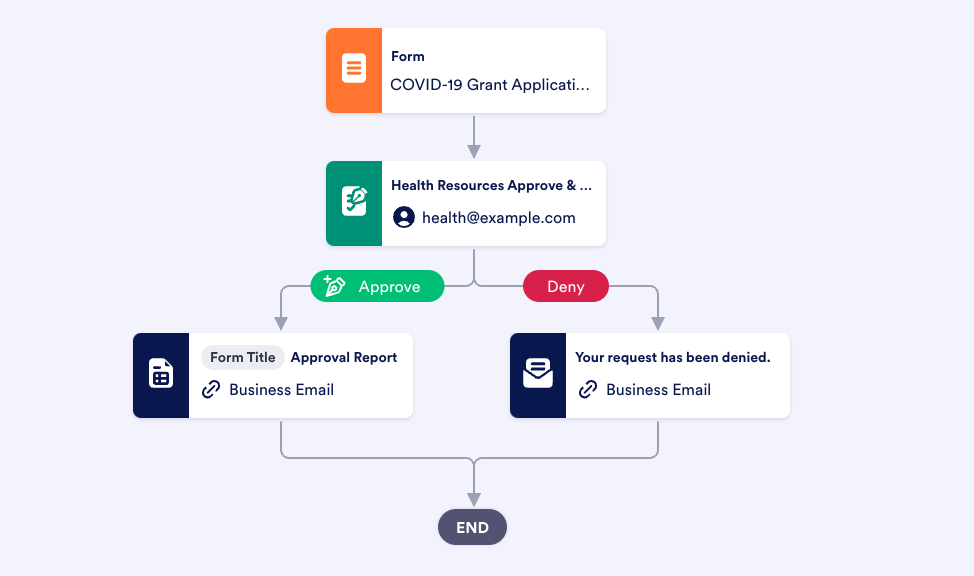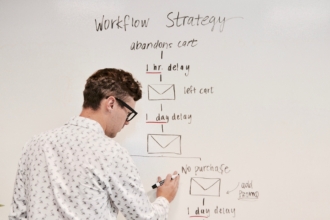Building a better grant review process
- Formalize evaluation principles
- Optimize grant applications for your needs
- Create a detailed review rubric
- Allocate labor appropriately
The grant review process is daunting for foundations of every size, but it doesn’t have to be. Regardless of how effective your organization’s process is now, it can always improve.
Grants enable your organization to act on its stated values and fulfill its purpose — they’re a cause for joy and celebration. Refining your review process won’t just ease stress and reduce burdens on your staff — it will help you make fairer and more inclusive decisions and leave a larger impact. Plus, a smooth process invites more grant applications.
Some of these refinements come from rethinking your approach to the grant review process. The most up-to-date technology can help you apply these and other upgrades. Here’s a guide to improving the application process.
Understanding the grant review process
Foundations occupy a unique space in the nonprofit arena. They’re akin to angel investors or venture capitalists, but they’re devoted to charity. Their primary function is to make the world a better place by funding worthy causes and organizations aligned with their mission. The best way to do this is to offer grants that allow nonprofits and other charitable ventures to fulfill their goals.
The challenge, however, is selecting which proposals to fund. Foundations are flush with requests every time they open the floodgates for applicants. Even for smaller foundations, sifting through submissions and choosing those that best match a grant’s intent can be emotionally draining, mentally rigorous, and physically exhausting.
Every foundation’s team should ask questions like these during the grant review process:
- Does this applicant’s mission complement ours?
- Does this applicant have the knowledge and skills to use a grant effectively?
- Can this nonprofit actually achieve its stated goals with the amount of money we can give?
- Are their efforts the best way to address a particular issue?
While these questions are necessary, the answers can be complex, turning the review workflow into a logistical and operational nightmare. That’s why simplifying the grant review process is incredibly important — it will help your foundation make better decisions about who and what to allocate resources toward.
Building a better grant review process
It’s never too late for your organization to refine the way you manage grant applications. Just be ready to think ahead, determine what you need to change, and be proactive. Here are some tips on how to adjust your workflow.
Formalize evaluation principles
Transparency around grant review guidelines won’t just make the process more orderly — it will help you receive better grant proposals. Nonprofits are more likely to put in greater effort on proposals when they know someone will judge them fairly and equitably.
Foundations should be transparent about the internal processes they use to review each grant, including what they do to maintain privacy, how they avoid bias, and what the timeline and deadlines are, among other considerations. Spell out all of these principles clearly on the application.
Optimize grant applications for your needs
A better grant review process actually begins long before you accept proposals. The more up front a foundation is about what they’re looking for, the better they can explain the information they need in the application forms. Remove any unnecessary questions to make the application as easy to read as possible. Applicants will appreciate a well-designed form as well.
You should also rethink how you collect applications. For example, Jotform makes it easy to collect grant applications in exactly the format you need them, thanks to customizable grant application forms and templates. You can even view submissions on mobile devices through the Jotform Mobile Forms app.
Create a detailed review rubric
A grant review rubric provides a detailed outline for every reviewer about exactly how to read and score a grant proposal. This helps reviewers stay consistent, keeps them focused on goals and metrics, and perhaps most important, minimizes personal bias.
The rubric should outline each analysis category, what to look for in each category, and the rating scale. Make sure you go over new and updated rubrics with your team.
Allocate labor appropriately
In an ideal world, two or three people should evaluate each proposal. This prevents any one employee from being overburdened and ensures your foundation gives each application significant attention. For grants with a large pool of applicants, consider having multiple teams complete reviews.
Using Jotform to streamline grant reviews
Having a seamless and fair grant review process requires a lot of planning, careful assessment, and insightful decision-making, but the results will be worth it. It will make your employees’ jobs easier and help your organization fulfill its purpose. Fortunately, you don’t have to do any of this manually anymore. Online platforms make grant application management incredibly easy.
Jotform saves time on document collection and sorting, thanks to thousands of customizable templates you can use to track grant applications or adjust your foundation’s budget. Even better, you can manage the entire grant review process through the new Jotform Approvals platform, which turns form submissions into a ready-to-run workflow. With better processes, your foundation can focus on doing meaningful work that changes lives.




























Send Comment: